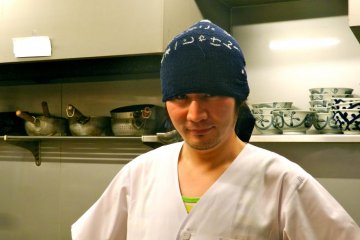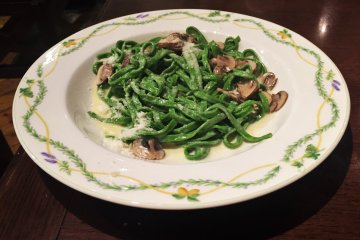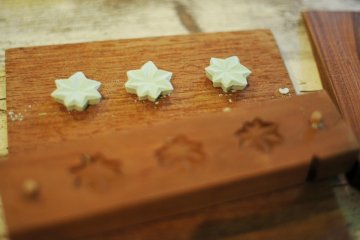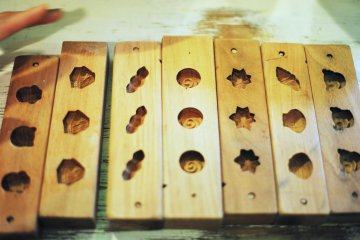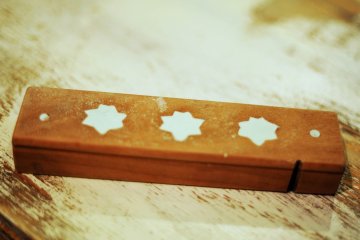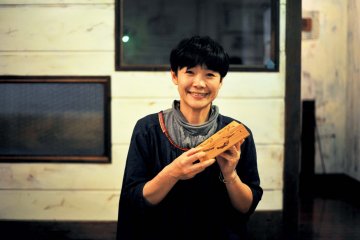The Japanese usually buy wagashi as gifts and souvenirs, and this is a chance to learn a very simple method of making your own. Mamehana is a cute little space in Takamatsu that runs traditional sweet-making workshops using wooden moulds.
Ayumi Uehara, who owns the space, is attempting to revive a dying tradition. Her father is Yoshihiro Ichihara, one of the finest wooden mould craftsmen in Japan, and the only one remaining in Shikoku. In the whole country, it is estimated that only five of these craftsmen are left to continue this tradition. The Japanese taste have changed and simple sweets like these have fallen out of favour, affecting demand for these beautiful moulds.
This workshop is an introduction to the world of wagashi and the wooden moulds. Ayumi uses a regional specialty sugar called wasanbon to make the sweets. The fine white sugar is made from sugar cane, and has a long tradition in these parts.
Participants receive a bowl of sugar, to which an edible coloured dye is added. The dye is mixed into the sugar by hand. The sugar is then sifted so it becomes as fine as newly fallen snow. Participants choose the mould they want to use and press the sugar into each compartment. As the sugar is compressed, it hardens and keeps its shape even as it is tapped out of the container.
Wagashi is best appreciated with matcha, and the workshop ends with participants eating their handiwork with powdered green tea. The wagashi melts as soon as it is placed in the mouth, and the sweetness juxtaposes with the bitterness of the matcha.
The space itself is small but special, with displays of whitewashed floors, makeshift art and wooden moulds to appreciate. Ask to enter the small room to the back to find more moulds, which are also on sale.
The space is a little difficult to find so it is worthwhile to give Ayumi a call or an email for directions. The workshop is priced at ¥1000 per person, and includes the wagashi and matcha. Reservations are essential as the space is not always open.





